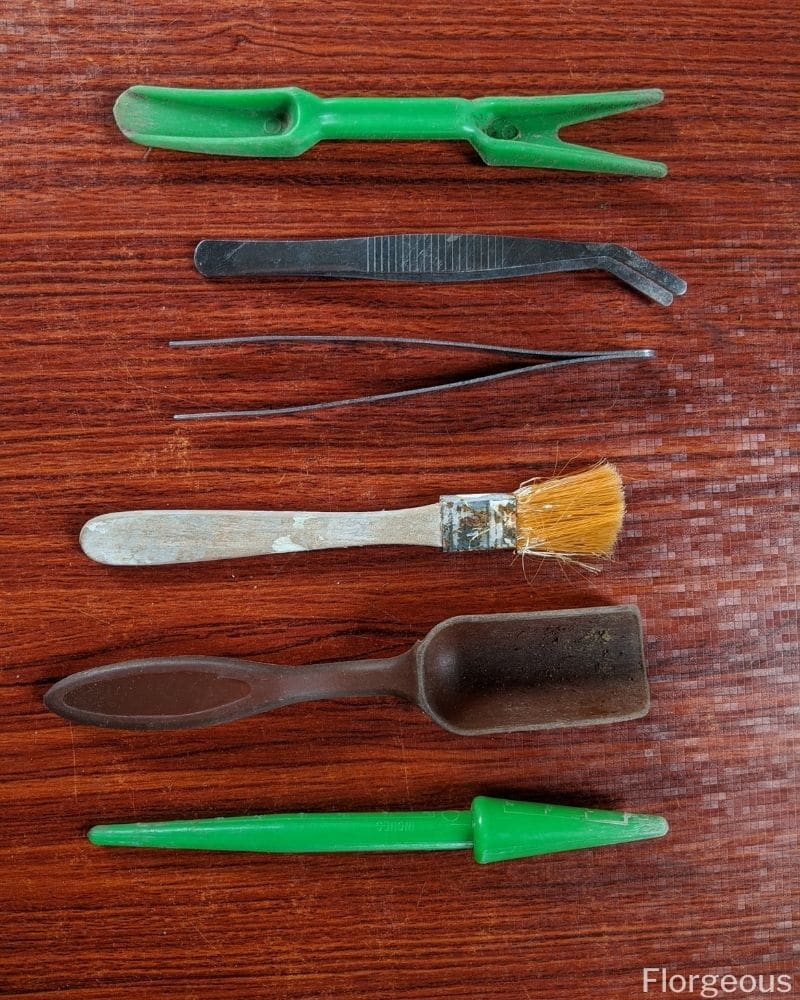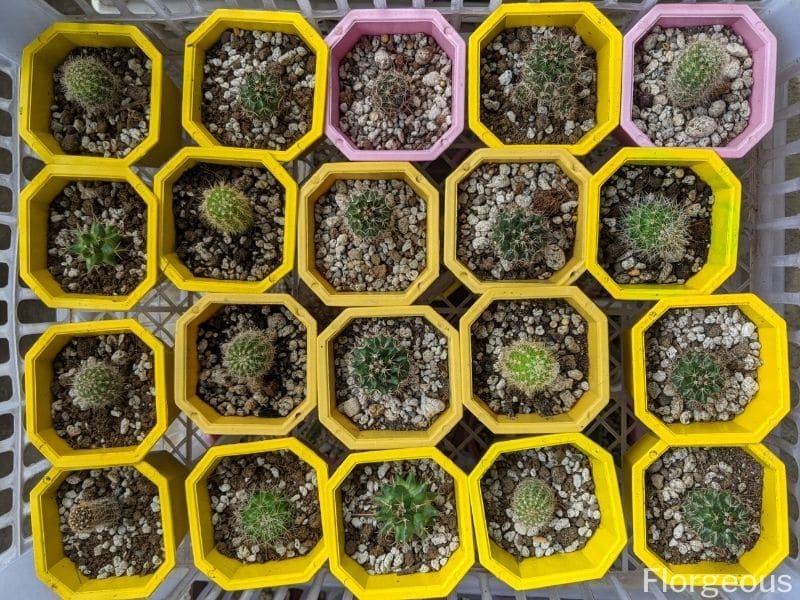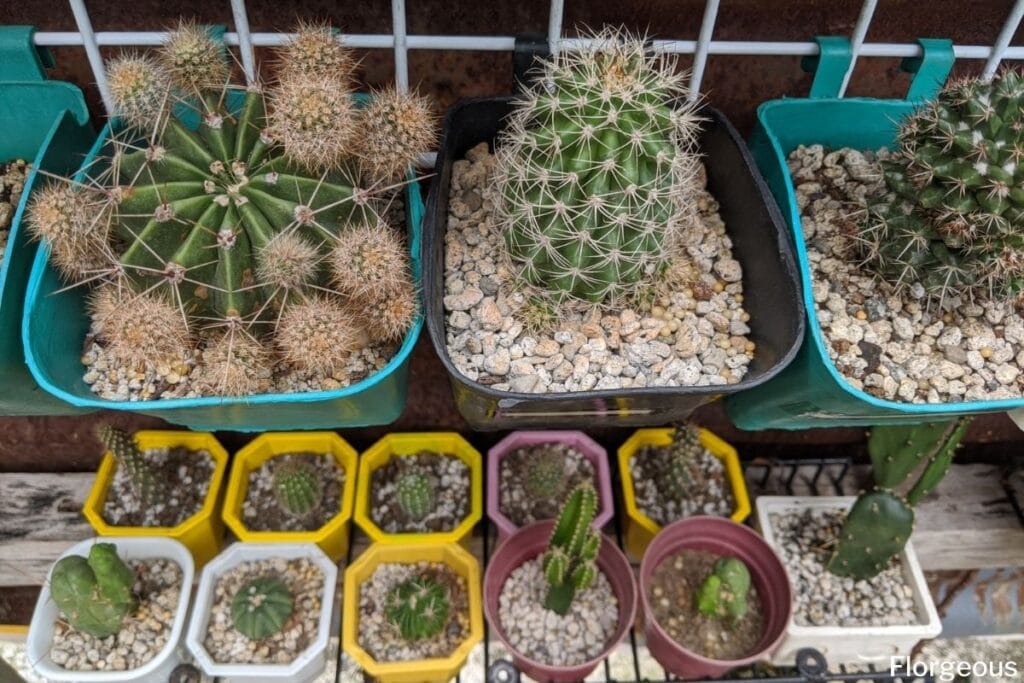Cacti are unique desert plants that have caught the attention of many house plant growers because of their ability to endure and even thrive on neglect. They do not require a lot of gardening work, especially watering, but there are other practices that need to be performed from time to time, like repotting. Cacti only grow a few inches a year but as they do, they will need more resources than what’s existing in their pot.
If you are a cactus neophyte or just looking for a way to repot your cacti, this guide will provide you with an effective approach to do so while keeping yourself injury-free and your prickly babies in top form.
Why You Should Repot Your Cactus
Just like with succulents, repotting and replanting cacti is occasional but necessary. As slow growers, cacti like Ariocarpus, Aztekium, Gymnocalycium, etc. do not take up a lot of space, particularly when started young. Despite their affinity for being root-bound, their roots can get too crowded in the pot which will prevent them from taking up the nutrients and moisture needed to grow.
On the other hand, there are plants like Echinopsis, Opuntia, Cereus, etc. that grow faster, as with most indoor cacti, overcrowding the aboveground instead. This too, limits the plants’ potential to spread and flourish.
Aside from this, some indoor cacti could be in critical conditions like the roots suffering from too compacted soil, poor drainage or overwatering which will remain unnoticed until they are uprooted for repotting (1).

When to Repot Cactus
Even though cacti are normally repotted every 2-3 years, a good gardener should still regularly inspect the plant to identify what it needs for optimum growth and the situations mentioned above should be kept in mind in order to schedule a timely repotting activity.
Ideally, these plants should be repotted during spring to early summer when the weather is mostly favourable to minimize heat stress. Never repot in winter because the cold will inhibit rooting and your cactus may die (2). Adult cacti should also only be repotted when necessary as their root tips are more prone to damage.

What Do You Need to Repot Cacti
Most of the time, repotting a cactus is performed because it has outgrown its container or when its size has reached 1.25 in of the edge of the pot (3). To promote a better growth, the cactus will need the right materials and growing medium.
Soil
A good cactus soil mix is crucial in repotting cacti. It should be gritty, well-draining, and slightly acidic to provide an optimum environment where the roots will establish. Hence, a potting mix made of 70% inorganic materials and 30% organic materials is recommended.
Inorganic materials commonly used are perlite, sand, grit, and pumice while the most common organic materials are regular potting soil, coco coir, compost, and peat. Experienced gardeners use a mixture of more than two materials to utilize the advantages of each. For example, pumice is lighter than sand but provides better aeration so a mixture of both as inorganic components will keep the medium stable and well-draining.
Mixing your own potting blend may be a trial and error process but it is best to be familiar with what works for your cacti to keep them healthy. When in doubt, there are succulent and cactus potting mix available commercially you can use instead (4).
Tools

Regular gardening tools are good enough for repotting most plants but when dealing with cactus plant, which are known for their glochids or tricky prickles, you will need special tools and the appropriate protective equipment.
Aside from your regular hand trowel, garden knife, and scissors, you need long handle tweezers to remove small debris in-between the cactus needles, a small flat brush to clean the dirt off the leaves and spines, a kitchen thong to hold and lift the plant, and a pair of leather or duct tape-wrapped gloves to help you pick the plant without getting injured.
Pot
In the dry wild where cacti naturally grow, they tend to spread roots to easily reach moisture or water that comes in contact with the upper layer of the soil. That is why indoor cactus grow well in broad, shallow containers. There are also columnar cacti that prefer deeper pots.
Cactus repotting requires the appropriate container, 1 to 2 sizes larger than its previous pot. This way, you can cater to your plant’s requirement and avoid overwatering cacti. Using larger pots will risk the growing medium into not draining faster than it should and eventually kill the plant (3).
Terracotta pots are the greatest cactus pots because they are porous and enable water and air to circulate around the compost. Plastic pots retain more moisture, so have the potential to cause root rot.
Mulch/Topdressing
Mulch or topdressing for cacti is preferably inorganic or gritty like pebbles, rocks and coarse sand. These materials can trap heat and moisture, providing a better soil environment, unlike organic materials which will decay in a short span of time and can serve as hosts for disease and pest.
Aside from being decorative, mulches also help in the percolation of water and prevent the body or leaf of the cactus from coming in contact with the soil.
Fertilizer
Cactus plants benefit from fertilizer application as this helps avoid spread of diseases and pests, promote flowering, and keep the whole plant healthy. A 5-10-5 feed, low in nitrogen, is usually applied in the fall just to sustain the needs of the plant and not boost growth.
It is not advisable to fertilize during winter as the plant should keep its reserves during this extreme condition. Supplying time-released fertilizer in spring will aid in maintaining the cactus (1).

How to Repot Your Indoor Cactus
- 1. Water your cactus 2-3 days before repotting. This way, the soil will not be soggy and not crumble during repotting and at the same time, the plant has taken up water to sustain while it recovers. To easily pull out the plant, run a knife around the inside of the pot.
- 2. Prepare your new container by making sure that there are enough drainage holes. Place a layer of pebbles at the bottom of the pot and add about an inch layer of your potting mix and using a spray bottle, slightly wet the soil. Set aside and work on the cactus to be transferred.
- 3. Before you handle the cactus, wear thick gardening gloves to protect yourself from injury. However, a lot of gardeners find that pressing the leather against the plant can break the prickles or spine so another technique is to use a few pages of a newspaper, fold them to a single band and gently wrap it around the cactus. It should have a spare strip dangling on the side which will serve as the handle. Carefully lift the cactus and inspect the root system. Remove brown and decaying roots then light mist the root system.
- 4. Hold your new pot firmly and set the cactus in place then fill in around the edges with cactus mix. Repeatedly insert the tip of the trowel around the root ball to make sure that there are no air packets in the succulent soil and add more mix to fill in the gaps.
- 5. Using a tweezer, remove rocks and debris caught in between the needles and with a small brush, clean off the dirt on the surface of the cactus. For small debris lodged in the small spaces near the areolas, you can use a straw and blow and remove them. Add a pebble mulch on top of the soil making sure that the stones are laid flat.
- 6. Place the cactus in a brightly lit location but not under direct sunlight. Leave this in this area for a few days before gradually exposing to sunlight. Water the cactus thoroughly after a week and let it dry completely before watering again. This is to prevent the recovering roots from shock and give them time to establish.
FAQs
How do you repot a cactus without killing it?
To repot a cactus without harming it, wear protective gloves, use a well-draining cactus mix, and gently remove the cactus from its current pot. Be cautious of the spines, and let the roots dry before placing the cactus in the new pot, ensuring it’s at the same depth as before.
Do I need to air dry cactus before repotting?
Yes, it is advisable to air dry the cactus for a day or two after removing it from its current pot before repotting. Allowing the roots to dry helps prevent potential issues like rot and promotes a successful transition to the new soil.
Up next: How to repot a succulent
References
Reference list
(1) Fowler, A. Plant Love. Hachette UK. 2018. P. 176.
(2) Kelly, J. How to Transplant a Cactus. The University of Arizona. 2005. P. 3.
(3) Pleasant, B. The Complete Houseplant Survival Manual. Storey Publishing. 2012. P. 384.
(4) Bailey, F. & Allaway, Z. Practical Cactus and Succulent Book. Penguin. 2019. P. 224.
Close







